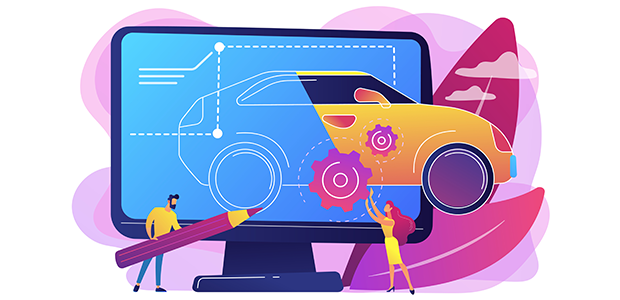
Long live the Product Designer: how companies can avoid falling foul of AI-assisted product design
I’ve been a product person my entire professional career. My many years as an Atlassian product designer, and design roles at Loop and Steve Chen’s AVOS have given me a unique perspective on how today's AI hype cycle is playing out in product design. From where I stand, when it comes to how AI is impacting the products and services we all use daily, we’re walking a fine line between good and bad.
There's a lot of hype about AI taking over the role of product designers and creating products without human involvement. For example, Nike is developing its own generative AI model to design products using its vast bank of athlete data. PepsiCo used AI to perfect the flavour of Cheetos.
These are good examples of AI-supported product development. We're far from the stage where AI could design a good product end to end. It’s dead simple to prove this point: Figma recently had to pull its new Make Designs tool after it drafted designs that looked strikingly similar to Apple’s iOS weather app. The company said it didn’t train its generative AI models and blamed a ‘bespoke design system.’
Amazon’s AI-generated “Floral Whispers: Colouring Book for Women” also caused a stir last year. While the AI generating the drawings got the florals right, it got the illustrated women wrong. Incorrect numbers of fingers and alien stares made for an off-putting colouring experience. The book has since been removed, but Amazon still sells AI-generated titles (now clearly labelled as such.)
We've just now reached a stage where AI can help us build better products based on demonstrated customer needs and answer the question, "What should we build next?"
This is a big deal as many product designers are flying blind, and product success is more often down to lessons learned from expensive product failures than informed design. Only a small percentage of product designers actually interact with their end users for feedback, and according to a report from Pendo, 80% of product features rarely get used. Harvard Business School professor Clayton Christensen says that over 30,000 new products are introduced yearly, and 95% fail.
AI won't be a magic solution to this problem, but it can help prevent product failures and guide the creation of solutions that users love and are ultimately more profitable for the companies that build them.
A lot of this is down to using AI to detect patterns and key themes in large volumes of data that would be impossible for humans to process. It’s making product design faster, and products more relevant for the people using them.
AI won’t succeed on its own, however. We’ll always need product designers. Without them, companies risk getting trapped in the 'AI echo chamber' – where AI develops products according to what it thinks we want rather than what we need. The result is often a solution that doesn't really have a problem. Ever try convincing a consumer to buy or adopt a solution to a problem they don't have? Who actually wanted (or needed) the Segway, the ‘new’ Coke, Google Glass, or even the Apple Vision Pro?
Unfortunately, if we rely solely on AI for product design, we won't create great products or discover entirely new product categories. Could AI have come up with the iPad off the back of Bill Gates’ failed tablet PC?
It’s never going to be a matter of phasing out product designers in favour of AI but rather of empowering product research and design with AI.
If AI can help product designers extract actionable customer insights in significantly less time, it will have a marked impact on product development and business growth.
And yes, I get it: AI-driven product design is not the sexiest use case. It may seem unimportant compared to how AI models fight climate change or how AI algorithms process images to identify illnesses and detect diseases.
But amid the AI hype cycle, money talks. The products we use daily are our best bet for proving AI’s potential for return on investment. As reported in Goldman Sachs’ Gen AI: Too Much Spend, Too Little Benefit, tech giants will spend over 1 trillion dollars on AI capex in the next few years, with very little to show for it. If we can use AI to improve our products and provide better, more personalised user experiences, surely that will go a long way to proving AI’s economic value.
None of this would be possible without hardworking product designers, so before we abandon human nuance, let’s sidestep the potential pitfalls of AI product design and use the technology to empower the people behind the products.

